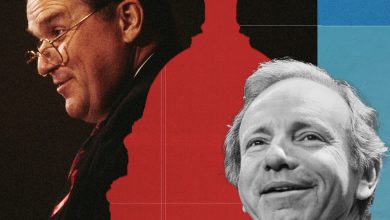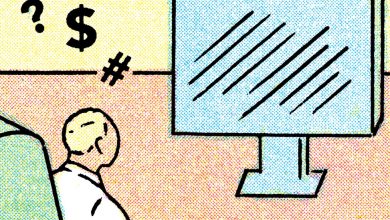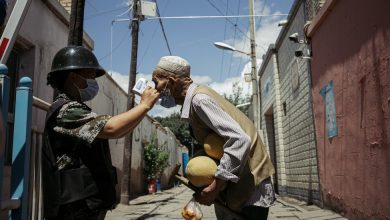My Trans Journey: A History in 6 Passports

Issued June 15, 1976
When my mother saw the photo on my first passport, issued exactly one week before my 18th birthday, she said, “You look like you have a secret.”
I did have a secret: I was trans. I didn’t think I was all that adept at hiding it, but somehow no one seemed to know. Even my mother seemed oblivious to the journey I longed to embark upon.
This winter, I came upon a stack of passports, all but the most recent marked “Canceled.” Those travel documents, bearing the stamps of customs agents around the world, provide evidence of the places I have been. They also paint a picture of the journeys trans people like me go on, passages as harrowing, in their own way, as movement across borders can sometimes be.
That 1976 passport got me as far as Munich, then in West Germany. I spent the summer traveling around, having adventures. One warm mid-July night I found myself sitting around a campfire with a bunch of hippies, eating rich brown bread, singing Bob Dylan songs in my high school German. Toward dawn I peeled off with a blonde girl from Köln. Her hair came down when I removed her kerchief. Then she put her hand on my cheek. “Wir sind gleich,” she said. We are the same!This stung. What right did she have to say this thing out loud? “Entschuldigung?” Excuse me?
I don’t mean that you are a girl, she said, a little bewildered. I just mean we are alike.
Ah, I said. I’d lost something in translation.
Issued March 27, 1985
Ten years later, new passport in hand, I traveled to Wales with my girlfriend. My undergraduate years at Wesleyan University were now five years behind me. I had spent my early 20s in New York, working at Viking Press and Penguin Books, hoping that somehow succeeding professionally would make it OK for me to stay a man. The plan hadn’t gone so well.
I’d published but a single piece, “The Five Strangest Places in America,” in High Times, the magazine of drug culture. In the issue that ran my story, there was a centerfold of a luscious pound of Colombian sinsemilla. I was proud of what I’d written, but I couldn’t show the magazine to my parents.
Just before this passport picture was taken I’d learned that my father’s melanoma was back. Later, as I wandered along the Welsh coast, all I could think about was him. He died a year and three days later, on Easter Sunday. A few days before he last closed his eyes, he squeezed my hand from the bed in which he lay. In a morphine dream he whispered, “The young men shall rule.”
Issued Feb. 4, 1998
My wife, Deedie, and I had been married for 10 years when I got a job teaching at University College in Cork, Ireland. That same year, I’d started talking to her about my gender — awkwardly, inarticulately. I didn’t know whether I had the courage to undertake the voyage of transition. Deedie didn’t know whether she could stay with me if I did.
Our children were then 2 and 4 years old. I was determined to live a more honest life. But what do you do if living honestly means putting the lives of the people you love in jeopardy? How can you expect the person you love to help you become yourself if that very process threatens to change what she holds most dear?
We spent that year in Ireland drinking Murphys, shopping for wild Atlantic salmon, listening to modern Irish folk bands like Nomos and North Cregg. One day, toward the end of our time in Cork, I climbed to the top of the Church of St. Anne. What am I going to do? I asked myself.
Someone started ringing the carillon as I stood there, the bells as loud as they could be. The song was “You Are My Sunshine.” “You’ll never know dear, how much I love you. Please don’t take my sunshine away.”
A year later I was on hormones.
Issued Nov. 7, 2002
When I wrote to the State Department to ask for a change in the gender assigned on my passport, I had to enclose a letter from my surgeon. I provided a copy of my name change, too, stamped with the golden seal of the Probate Court of the State of Maine, the place we had made our home since I started teaching at Colby College in Waterville. Still, I was stunned when the envelope arrived in the mail with my new passport, my sex marked definitively: F.
My family had remained intact. Deedie decided that she loved me in either gender. In some ways, post-transition, we became closer than ever.
I didn’t especially need a new passport; I wasn’t going anywhere. It was the only time I’d renewed a passport without having a specific journey in mind.
Issued March 25, 2012
A strange side effect of hormones was that for a while, I looked a lot younger than I was, taking me on a journey not only of gender, but of time travel as well. But by 2012, the clock had caught up with me. Still, I didn’t mind looking older. I now well understood society’s beauty expectations, for trans and cis women alike. But it’s not only the passage of time that’s visible in my face here; by 2012 I’d also seen exactly how cruel the world is to women like me.
By the time this photo was taken, I’d spent a decade advocating for the rights of L.G.B. and especially T people. It was good work, but it absolutely wore me down. Every day I learned of terrible fates of women like me: those lost to murder, those who lost their families, those whose children were told their fathers were dead.
In the wake of publishing my memoir, “She’s Not There,” I was often in the public eye. On more than one occasion I agreed to tell my family’s story on Oprah Winfrey’s talk show, hoping that these appearances would help normalize the lives of families like ours. But each visit felt more demeaning than the last. On one program, I appeared with Deedie in hopes of sending the message that love can prevail. Instead, Oprah grilled us about our sex lives. On the flight back home, I put my head down on my tray table and cried.
Larry King raised an eyebrow when I was his guest and asked me if I had “a part missing.” I knew what he was getting at, but I refused to take the bait.
What I wish I’d said? “I’ve gained something.”
Issued Oct. 5, 2021
My wife and I visited Italy in late summer 2021. I’d been doing research for a book I was trying to write, about the cultural history of pizza. One day in Rome, we visited the Borghese Gallery. Together we gazed upon the pieces of Damien Hirst’s controversial “Treasures From the Wreck of the Unbelievable,” works the artist said had been salvaged from the sinking of a fantastical ship. For a while I stood before a statue of a nude female form, covered with barnacles. It pierced me how beautiful she was.
When we got home, I updated my passport once more. I look at the no-longer-young woman in this passport photograph, and as Nora Ephron once said, I feel bad about my neck. Still, I am finally exactly who I’d always hoped I’d be. If I live as long as my mother — who died just shy of 95 — I will have lived more than half my life female. True, my outsides are more than a little worn down. But my heart has a peace I could never have imagined the night that girl in Munich put her hand on my cheek and said, “Wir sind gleich.” There are times when the journey of my life really does feel like a treasure salvaged from the wreck of the unbelievable.
When I finally got back to New York, I hastily filled out my customs form as we arrived at Kennedy Airport. Did I have anything to declare? Hell yes I have something to declare, I thought: I’m free. I wanted to shout it at the top of my lungs. But I said nothing as I handed the customs agent my form.
“Have a nice day, ma’am,” he said and opened the gate. “Welcome home.”
The Times is committed to publishing a diversity of letters to the editor. We’d like to hear what you think about this or any of our articles. Here are some tips. And here’s our email: [email protected].
Follow The New York Times Opinion section on Facebook, Twitter (@NYTopinion) and Instagram.





